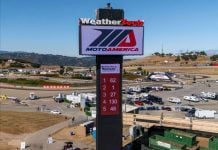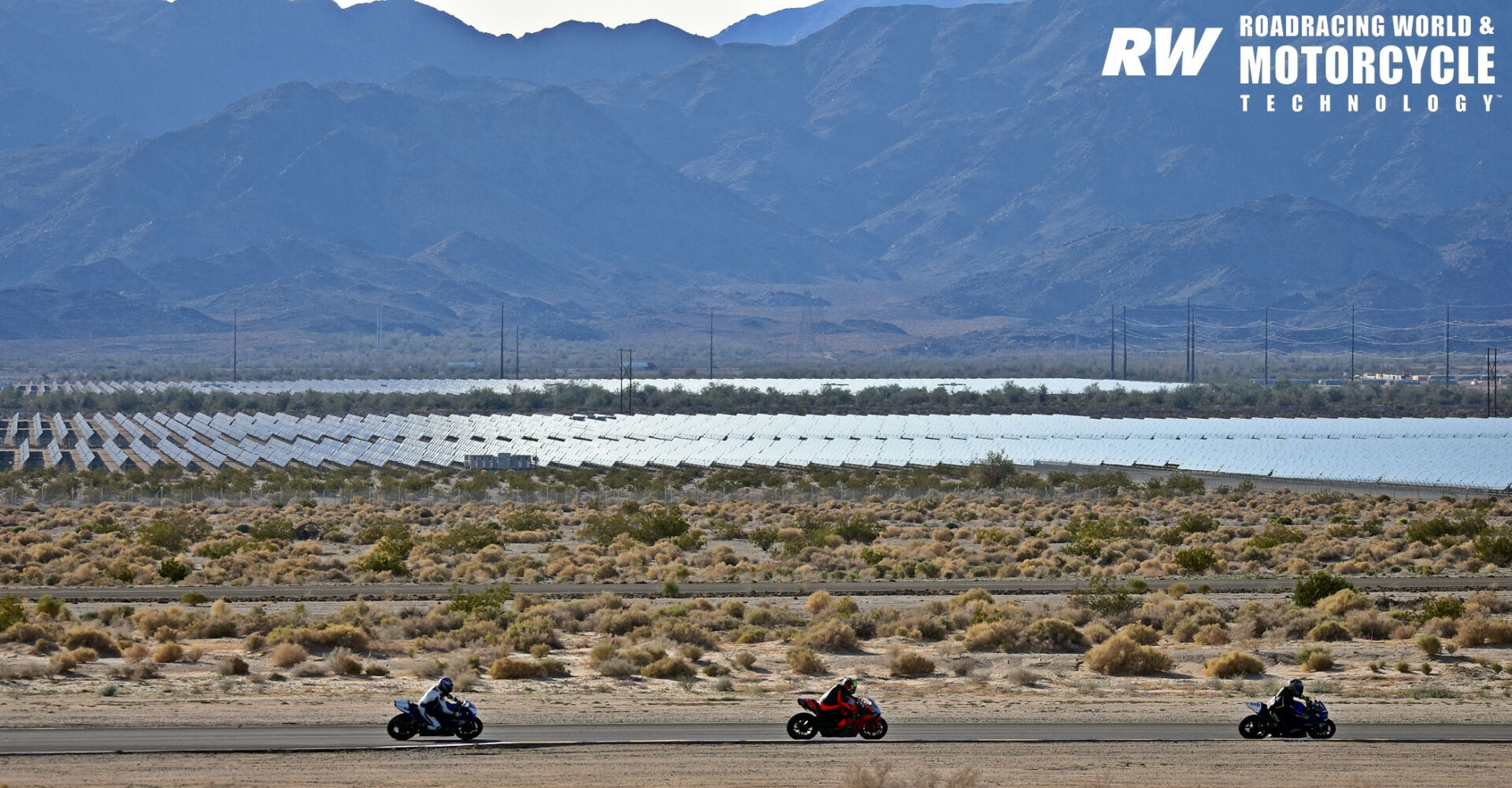By Michael Gougis
The story is as old as racing circuits are. Land uses change around a popular circuit, neighbors complain, land values go up, and the circuit disappears. The litany of circuits that have been devoured by encroaching development in Southern California alone is disturbing to those who have followed motorsport for decades.
But there is a ray of hope in some areas.
Generating solar power requires lots of land. And solar farms are good neighbors to racetracks. They provide a solid buffer zone, sometimes acres, between the circuit and any other land use. They are not disturbed by noise or traffic. They don’t require a lot of people on site. And once they are established, they are not the sort of uses that are easily displaced by residential, commercial, or other industrial uses.
The solar panel farms surrounding Chuckwalla Valley Raceway in Riverside County, California, provide an example. Not that there is a mad rush to develop the area near the Colorado Desert facility, located in an hot, harsh environment that has not exactly attracted the attention of home builders or industry. It is an hour’s drive away from Palm Springs, the closest major population center.
But it is an ideal environment for solar generation. The region is generally sunny, with a mean annual high temperature of 87.4 degrees F and an average rainfall of 3.92 inches. That’s less than 40% of the average rainfall for deserts globally. So the hot, dry, sunny climate has spawned fields of solar panels around the property.
The climate and the adjacent land covered by solar panels help insulate the track from typical problems faced by other tracks, including other forms of development or constant complaints from nearby residents who move near an existing track, then work to close it.






